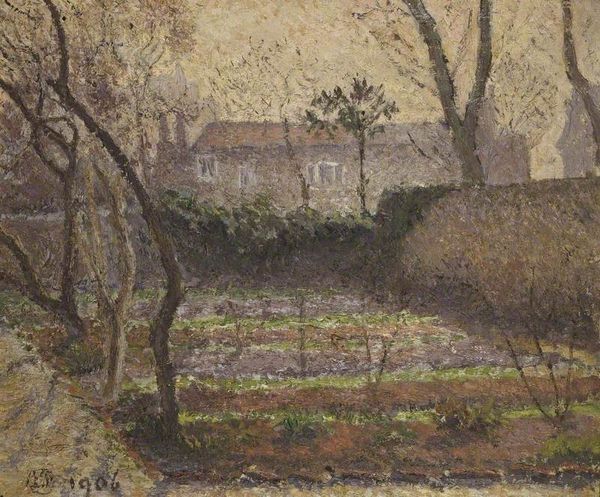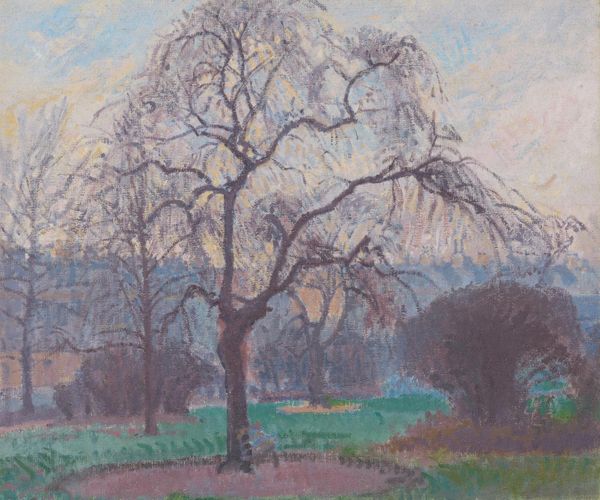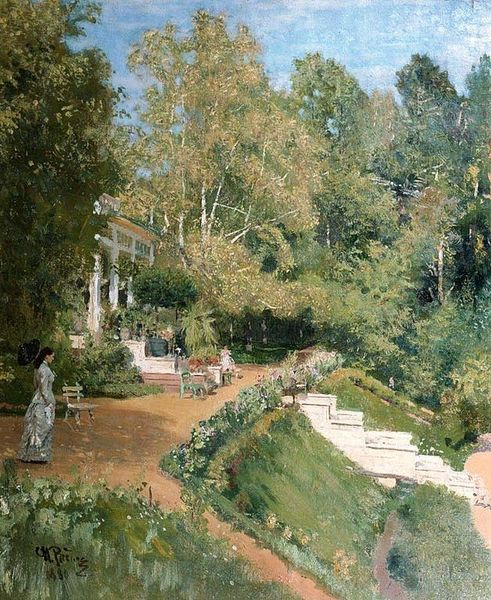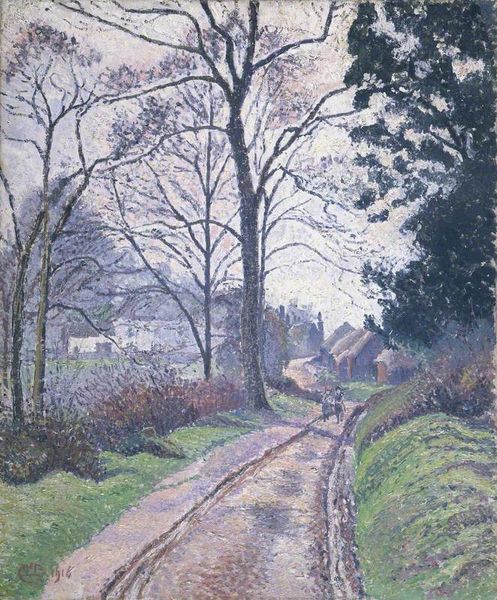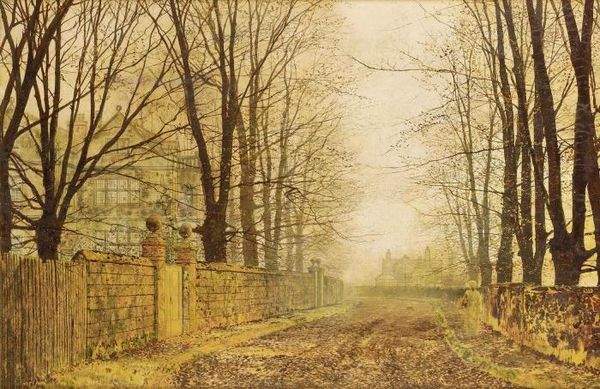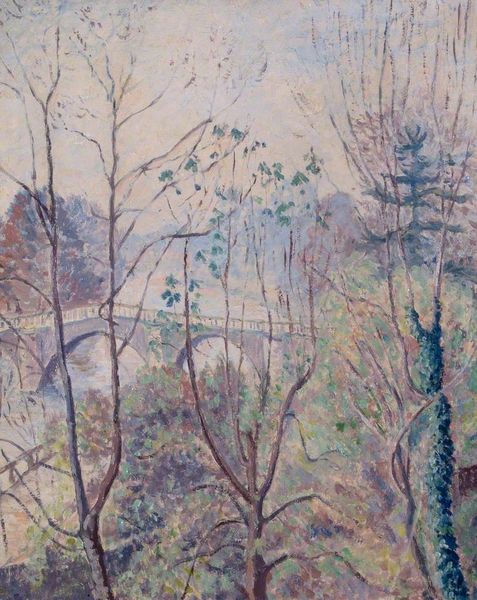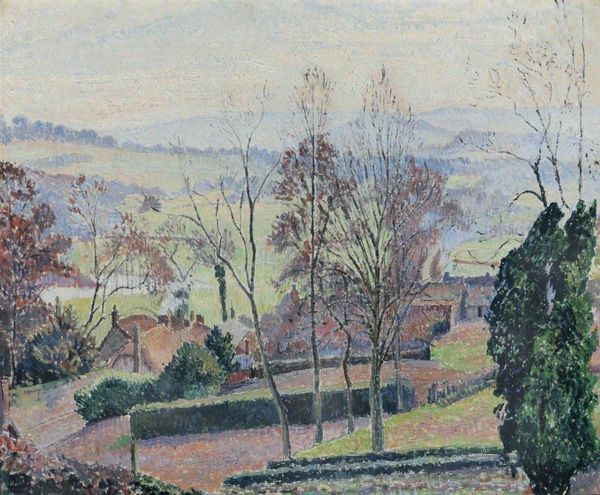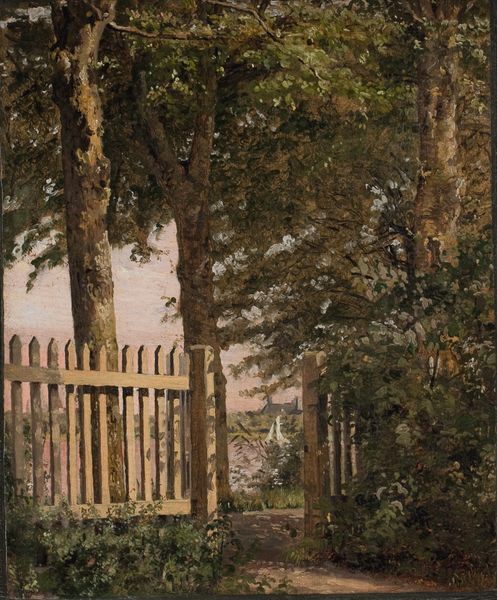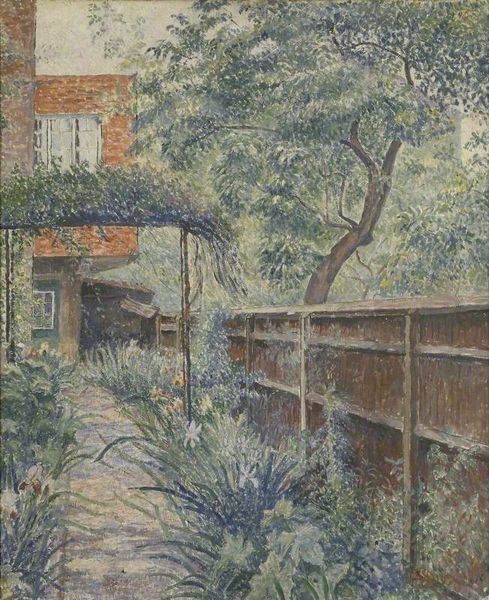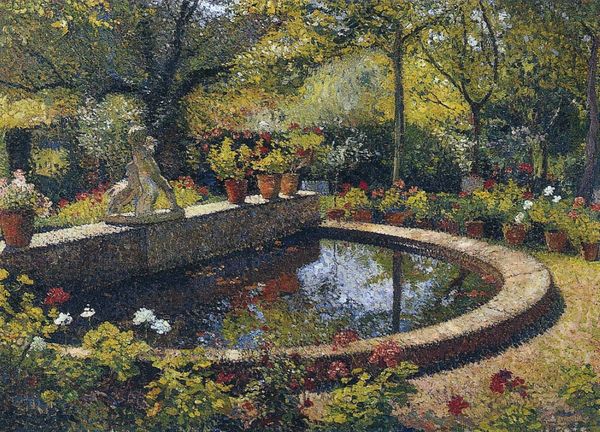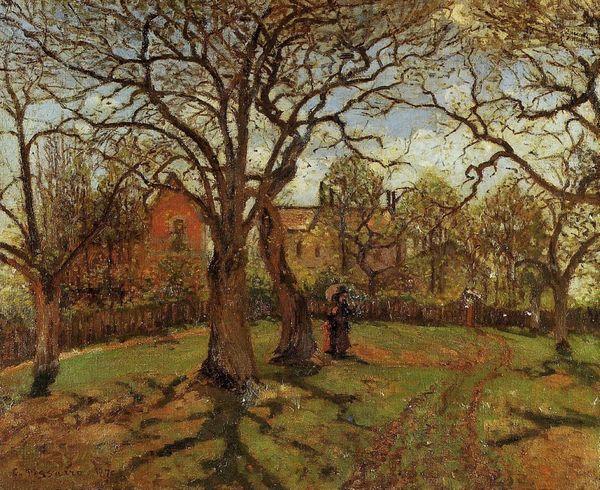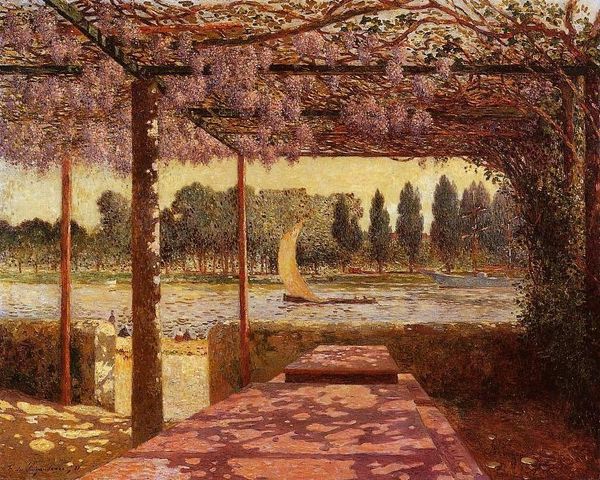
Copyright: Public domain
Lucien Pissarro's "The Garden Gate, Epping" offers a glimpse into an intimate, enclosed world through the symbolic motif of the gate. This humble wooden structure speaks volumes. The gate, with its cross-like bracing, presents us with an ambiguous invitation: to enter or to remain outside. The gate is an ancient symbol. We see this repeated throughout time and space, from antiquity to now. It represents not only a physical threshold, but also a psychological one, the passage from one state of being to another. Think of the gates to paradise or hell, portals to the unknown. The motif’s evolution is fascinating. In ancient cultures, gates were often guarded by deities, acting as liminal spaces between the sacred and the profane. Later, in medieval art, the gate signified the entrance to the celestial city, promising salvation. The longing and the desire to transcend echo within us. The gate is not merely a barrier, but an archetype deeply ingrained in our collective consciousness. It is a recurring motif in our dreams, symbolizing opportunities, choices, and the eternal quest for something more.
Comments
No comments
Be the first to comment and join the conversation on the ultimate creative platform.
